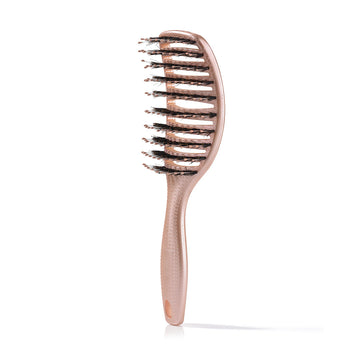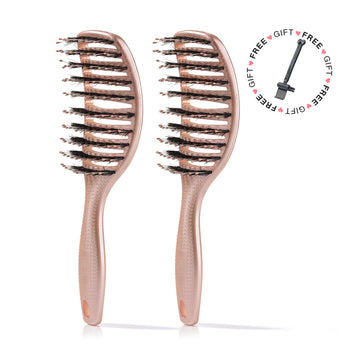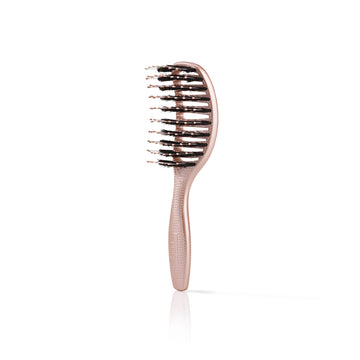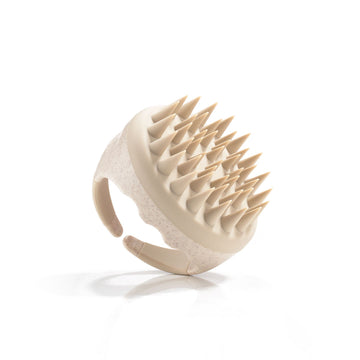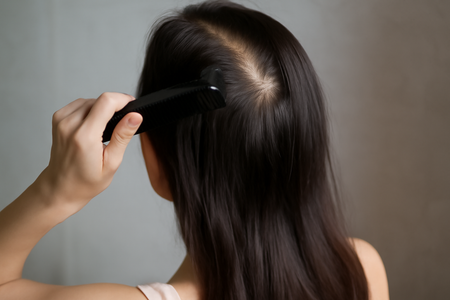
Understanding the causes of uneven hair growth
Uneven hair growth can be attributed to a variety of factors, each contributing differently to the issue. Understanding these causes can help in identifying the most effective solutions for achieving more even growth.
Genetic and hormonal influences
Genetic predisposition plays a significant role in determining hair growth patterns. If your family has a history of uneven hair growth, you might experience similar patterns. Additionally, hormonal fluctuations during life stages such as puberty, pregnancy, and menopause can impact the growth cycle, leading to temporary unevenness.
Medical conditions and lifestyle factors
Various medical conditions can lead to uneven hair growth. For instance, thyroid disorders and alopecia areata are known to disrupt normal hair growth patterns. Certain medications can also have side effects that affect hair growth. Moreover, lifestyle choices, including stress levels and hair care practices, can exacerbate the issue.
When to consult a professional
While some unevenness is typical, there are instances where professional consultation is advisable. If you notice sudden hair loss, scalp inflammation, or systemic symptoms, it’s crucial to seek medical advice. A healthcare provider can perform evaluations to determine any underlying causes and recommend appropriate treatments.
At-home strategies for promoting even growth
Implementing specific at-home care strategies can help promote more even hair growth. Here are some effective methods:
- Gentle hair care: Use sulfate-free and silicone-free products to maintain scalp health without weighing down the hair. These products help avoid buildup that can affect growth patterns.
- Scalp stimulation: Regular scalp massages can enhance blood circulation, aiding in balanced growth. Incorporating rosemary hair oil into your routine can further support scalp health and stimulate growth.
- Protective styling: Avoid hairstyles that put excessive tension on the hair, as this can lead to traction alopecia and exacerbate uneven growth.
Styling tips for immediate visual balance
While long-term solutions are essential, styling techniques can provide immediate visual balance to uneven hair growth. Here are some tips:
- Precision haircutting: A well-executed haircut can create the illusion of evenness. Opt for styles that incorporate layers or texturizing to balance out any uneven areas.
- Strategic parting: Changing your hair part can help disguise uneven growth. Experiment with different parts to find the most flattering look.
- Color placement: Using highlights or lowlights strategically can add dimension and create the appearance of more uniform hair.
Incorporating these strategies can help manage uneven hair growth effectively, providing both immediate and long-term solutions. By understanding the underlying causes and adopting appropriate care and styling techniques, you can work towards achieving more balanced hair growth.
Routine template for consistency
Creating a consistent hair care routine is essential for promoting even hair growth. A structured plan helps you monitor progress and make necessary adjustments over time. Here's a 12-week hair care plan to guide you:
- Weekly wash schedule: Use sulfate-free shampoos to cleanse your scalp without stripping natural oils. This helps maintain a healthy environment for hair growth.
- Scalp massages: Perform regular scalp massages to increase circulation and promote even growth. Incorporating rosemary hair oil can enhance the benefits.
- Protective styling: Opt for styles that minimize tension on the hair, such as loose braids or buns, to prevent traction alopecia and support even growth.
During this period, set checkpoints to evaluate your progress. If you notice little to no improvement, consider consulting a healthcare professional for further assessment or exploring medical treatments.
Frequently asked questions
Why does one side of my hair grow faster?
Asymmetrical hair growth can be due to a variety of factors, including genetics, the natural dominance of one side of the body, or uneven scalp health. Ensuring balanced scalp care and avoiding tension-inducing hairstyles can help address this issue.
Is an uneven hairline normal or a sign of hair loss?
An uneven hairline can be a natural variation or a sign of hair loss. If the unevenness is accompanied by thinning or bald patches, it may indicate a condition that requires medical attention.
How long to see results with minoxidil or rosemary oil?
When using treatments like minoxidil or rosemary oil, patience is key. Results can vary, but most users begin to see improvements in hair growth after 3 to 6 months of consistent use.
Can sulfate-free shampoos help with uneven growth?
Sulfate-free shampoos can support more even hair growth by maintaining scalp health and preventing irritation. They help reduce buildup and keep the hair environment balanced, which is conducive to uniform growth.
 2-4 day UK delivery
2-4 day UK delivery
 25.000+ satisfied customers
25.000+ satisfied customers
 Satisfaction Guarantee
Satisfaction Guarantee






